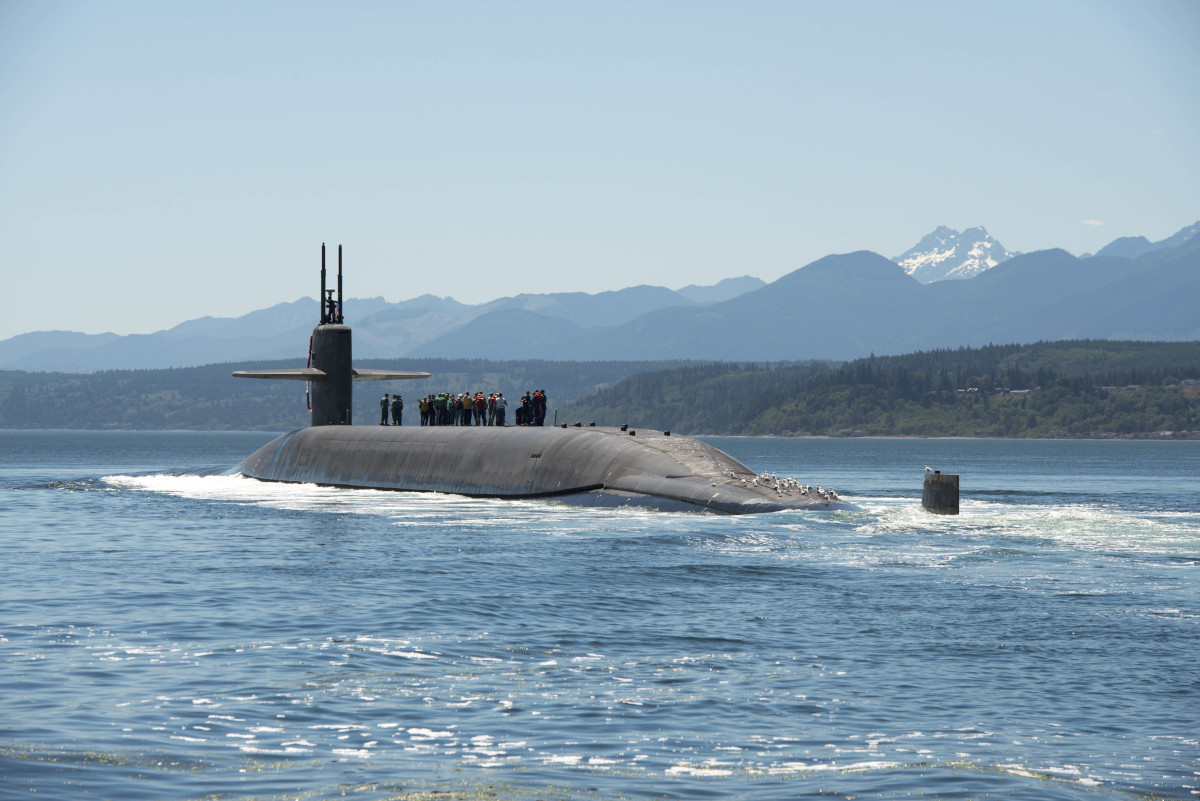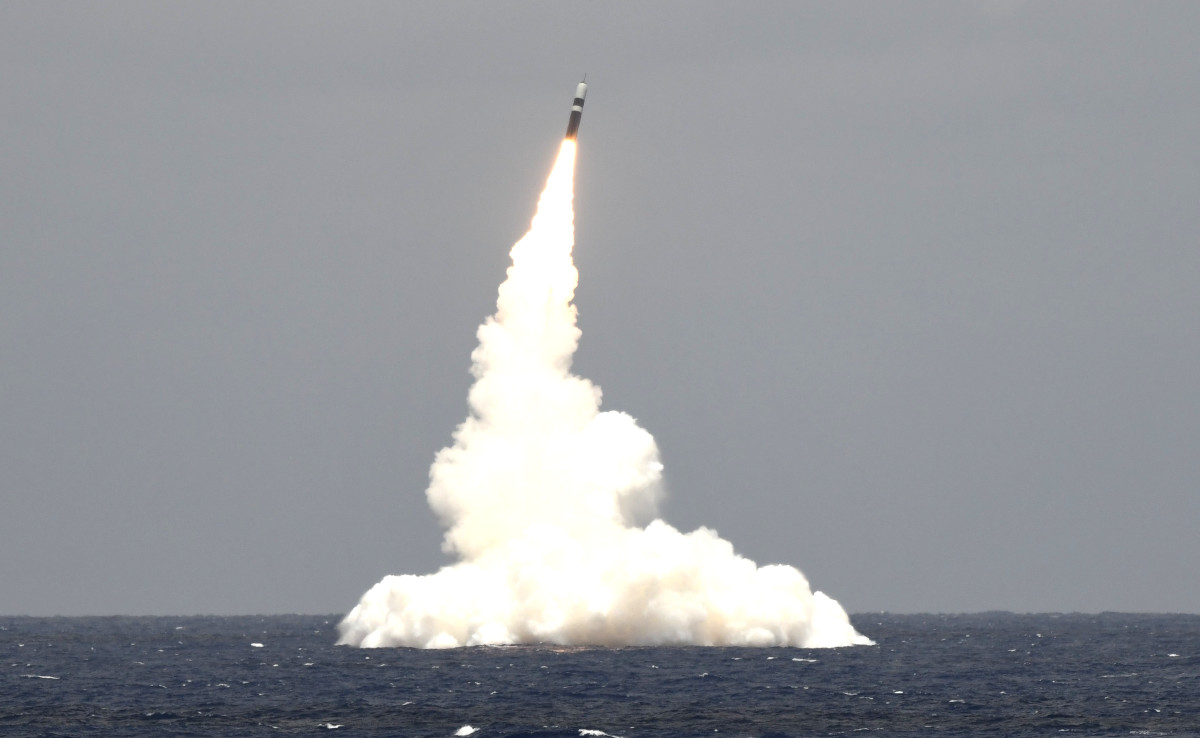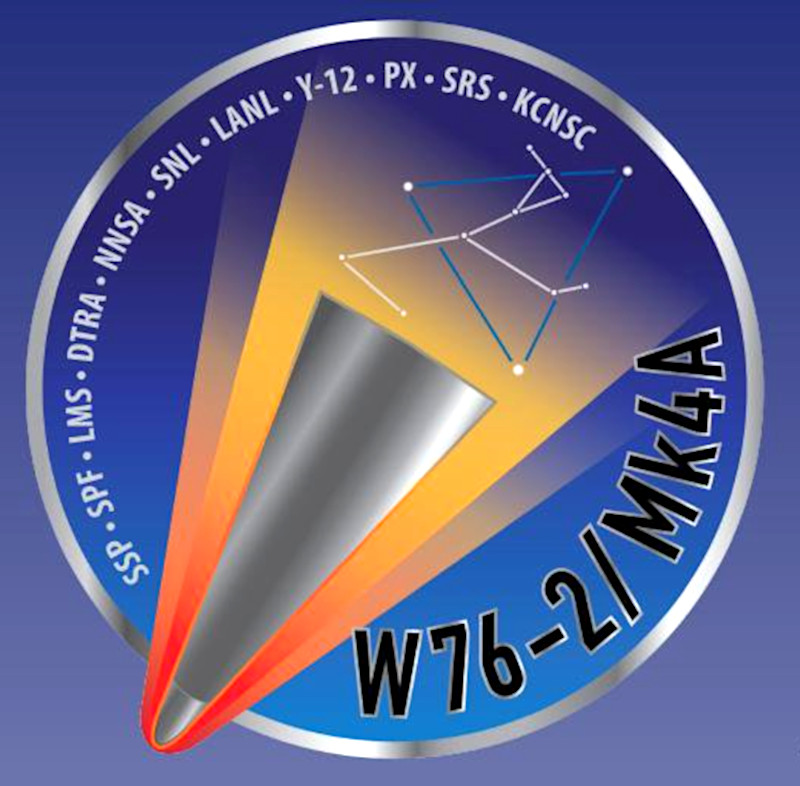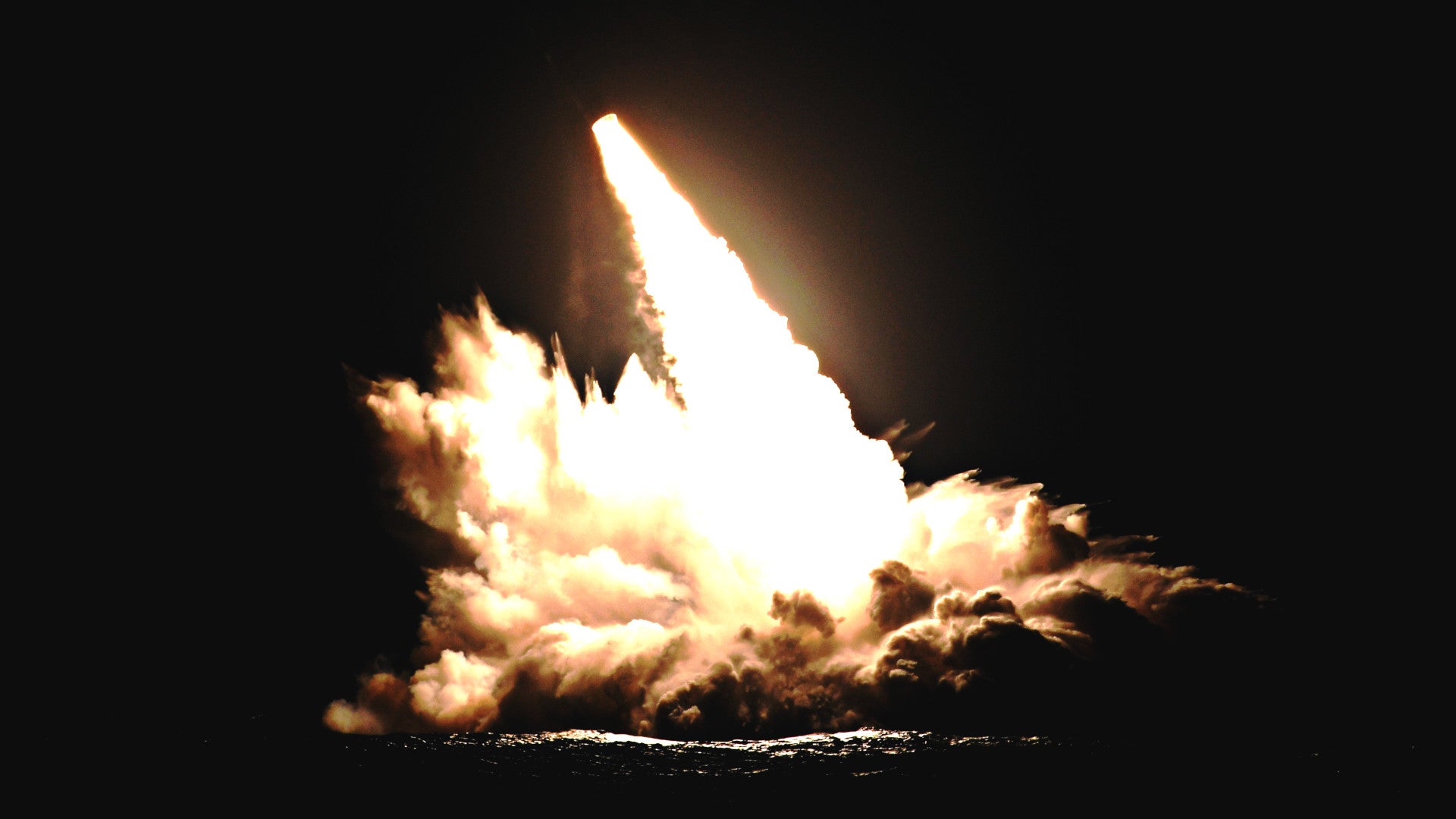The U.S. Navy has announced that the Ohio class ballistic missile submarine USS Nebraska test-fired four Trident II missiles over the course of three days this week. The service does regularly test its submarine-launched ballistic missiles, but typically just in ones or twos. This larger test event comes as the United States is supposed to be getting close to fielding a new version of the Trident II with controversial lower-yield W76-2 warheads and amid an emerging arms race with Russia.
In this most recent series of Trident II test launches, Nebraska fired two missiles on Sept. 4, 2019, and another two on Sept. 6, 2019. The submarine fired all of the weapons from an unspecified location off the coast of Southern California. Based on U.S. government warning notices to aircraft and ships, it appeared that the missiles may have come down in the Pacific Ocean north of Hawaii and/or near Guam. To date, there have been 176 total test launches of the Trident II, also known as the Trident D5.
“These test flights were part of a Commander Evaluation Test (CET) whose primary goal was to validate performance expectations of the life-extended Trident II (D5) strategic weapon system,” according to a U.S. Navy release. “CETs and other flight tests are conducted on a recurring, scheduled basis to evaluate and ensure the continued reliability and accuracy of the system.”
The UGM-133A Trident II missile first began entering service in 1990 and the missiles would have begun to hit the end of their original service life in 2024. This led to the D5 Life Extension program and Ohio class submarines began receiving the new D5LE missiles, which are expected to remain in service into the 2040s, in 2013.
“The life extended missiles are now being deployed to the Fleet, but our work is not done,” U.S. Navy Vice Admiral Johnny Wolfe, head of the Navy’s Strategic Systems Programs office, said in a statement. “The nuclear deterrence mission is the Department of Defense’s No. 1 priority, and for the U.S. Navy that means not only maintaining our current capability, but also developing the next generation of Trident missiles and shipboard strategic weapon system that will ensure a credible sea-based deterrent for the next 40 years and beyond.”

The Navy is already exploring what the next missile, referred to at present as the D5 Life Extension 2, or D5LE2, might look like. “[It] won’t look like the D5 that we’ve got today, it won’t be completely new, it will be somewhere in the middle,” Wolfe had explained in 2018. The service is expecting to have fully transitioned to the D5LE2 by 2042 and plans to keep those missiles in service through at least 2084. You read more about how these future missiles may differ from existing Trident IIs in this past War Zone piece.
Still, while Trident II test launches are certainly routine, firing four missiles in less than a week is decidedly more uncommon. The last D5 test, which occurred in May 2019, involved USS Rhode Island, another Ohio class ballistic missile submarine, firing just a single missile. More than a year earlier, Nebraska
fired off a pair of Trident IIs in another test.
Of course, it is worth noting that this isn’t the first time the Navy has conducted a test like this. An unspecified Ohio class submarine fired four D5s over three days in what the Navy described as a Follow-on Commander’s Evaluation Test (FCET) in February 2017. It’s also important to point out that the Navy does not appear to announce every Trident II test event. There were five other test shots between the March 2018 and March 2019 launches, but it’s not quickly clear how many separate test events there were.

The Navy did not say whether Nebraska‘s latest test launches were related in any way to more intermediate developments with regards to the Trident II missile. On Sept. 4, 2019, officials from the National Nuclear Security Administration, which oversees the construction, refurbishment, and disposal of nuclear warheads, said that the deployment of a new variant of the W88 warhead, the W88 ALT 370, for Trident II was facing a delay.
The D5s can carry up to 14 W76-1 or W88 warheads, which have estimated yields of 100 kilotons and 475 kilotons respectively. A series of arms control treaties between the United States and Russia has led to reductions in the total number of warheads in each missile, with Trident IIs now typically armed with between five and six warheads each.
As of 2015, NNSA expected to complete production of the first example of the W88 ALT 370, which reportedly has improved arming, fuzing, and firing components, in December 2019. It’s not clear now when those warheads may begin to enter service.
The Navy was also supposed to reach initial operational capability with the W76-2 warhead, which is redesigned to produce a lower-yield, by the end of this year. NNSA says it produced the first of these in February 2019. This is a particularly controversial development, which advocates say is necessary to provide the United States with a more flexible nuclear weapon to respond to more limited contingencies. Critics contend that such a weapon only raises the likelihood that the U.S. government will decide to employ a nuclear option, which, in turn, could easily lead to a larger crisis and potentially an all-out nuclear war depending on the adversary in question. You can read more in-depth about the issues and concerns at play in this debate in this War Zone story.

The Navy did stress that Nebraska’s launches were not “in response to any ongoing world events.” Just in August, Russia conducted its own latest tests of submarine-launched ballistic missiles. The Project 667BDRM Delfin class ballistic missile submarine Tula fired a single R-29RMU Sineva liquid-fuel ballistic missile, while the Project 955 Borei class Yury Dolgorukiy launched an RSM-56 Bulava. Back in May 2018, the Yuri Dolgoruky
notably fired off four Bulavas in a single salvo as part of a snap nuclear drill.

China is also expanding its ballistic missile submarine fleets and developing a new submarine-launched ballistic missile to go with them. North Korea recently showed pictures of a modified early Cold War-era submarine modified to launch ballistic missiles, as well.
Regardless of whether the launches were routine or not, this large test event also comes as the United States and Russia are finding themselves increasingly at odds over strategic arms control and other nuclear weapons-related issues and signs of a new arms race are already growing. The U.S. government has publicly said that it needs the W76-2 in large part to counter potential Russian developments, as well as the country’s purported “escalate-to-deescalate” doctrine. Experts continue to disagree about whether this policy actually exists.
In addition, the bilateral Intermediate-Range Nuclear Forces Treaty, or INF, recently collapsed after more than three decades. Soon after, the U.S. military tested a ground-launched Tomahawk cruise missile.
There are now fears that the New Strategic Arms Reduction Treaty (New START), which will expire in 2021 if not renewed, maybe also be in danger. Russia developing a number of new nuclear weapons, including a nuclear-powered cruise missile, reportedly at the center of a recent accident that killed at least seven people, and a nuclear-powered torpedo, neither of which would necessarily fall under New START’s existing provisions anyways.
With all this in mind, even routine missile tests, such as Nebraska‘s four recent Trident II launches, may carry an increasing geopolitical weight, whether the United States wants them to or not.
Contact the author: joe@thedrive.com
